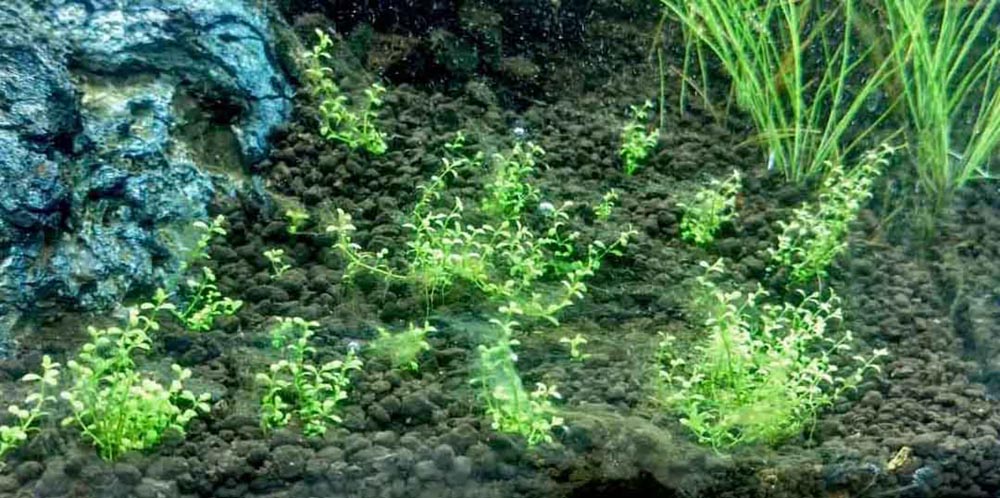Your Cart is Empty
How to control brown algae (diatoms)
January 23, 2025 3 min read

Introduction
Diatoms (a member of the algae class Bacillariophyceae) appear as yellow-green or brown spots and/or as a stringy brown mass. Diatoms are found in virtually all freshwater and saltwater bodies and are one of the most ubiquitous algae in the world, accounting for a quarter of the world's biomass. Diatom photosynthesis in the oceans produces more than 25% of the world's oxygen. They can be found in small quantities on the surfaces of plant leaves and in the substrate - and can be found in virtually any aquarium, no matter how clean it looks.
Diatoms multiply rapidly in the right conditions, doubling in size in as little as 24 hours, but the lifespan of individual cells is short, usually less than a week. Diatoms build their cell walls from silica, and this has led some to conclude that it is silicates from sand or soil that cause diatoms to bloom. Studies have shown (Kilham, 1971) that the levels of silicate required for diatoms to thrive in freshwater are very low, and most freshwater systems are rich in silicate - so total removal of silicate does not seem to be a practical approach to diatom control. Most tap water contains silicates, as do substrates such as sand or aquasoil.
A common occurrence in new aquariums
Why do new tanks suffer more from diatoms? Some people have suggested silicates or ammonia or phosphates as possible triggers. However, when we add the same set of chemicals to a mature tank, we do not induce diatoms to spawn. So the presence of diatoms is not due to nutrient availability alone. A lack of tank maturity seems to be closely linked to the occurrence of diatoms, and it may well be that a mature tank has enough microbes that feed on diatoms to prevent the algae from colonising the tank environment.
In planted aquariums, diatoms are particularly common in new setups during the first few weeks. Fortunately, diatoms tend to disappear on their own in most cases as the plants settle in and the tank becomes biologically mature over 3 to 4 weeks. Tank maturity and plant dominance are more likely to contribute to a tank being free of visible diatoms than specific water parameters or silicate levels.
Diatoms reproduce very quickly and many algicides are not very effective against them. Plant husbandry and the adaptation of new plants to the tank have a major impact on algae.
To see how the tank at top, transforms into the tank below, with no use of algicides, go to this page.

Common Causes
-
Biologically immature planted tanks
-
Sustained presence often caused by tank instabilities that resets/disrupts the biological cycle (exotic substrates, especially for DIY dirt substrate users can face this)
-
Poor water quality from tap
-
Elevated ammonia or phosphorous levels in a biologically immature tank
Solutions
-
Speed up aquarium's biological maturity by using mulm or old filter media
-
Higher plant mass allows plants to out complete algae
-
Plant husbandry techniques to get plants adapted more quickly as described on this page
-
Manually siphon off mild cases
-
Ion-exchange resin that removes ammonia/phosphorous in desperate cases


Silicates and diatoms?
"But many papers out there show a link between silicates and diatoms"
Concepts from the study of natural systems are not necessarily directly applicable to the operation of our aquariums. Silicates are present in most tap water and soils, and most aquariums are not lacking in them. A newly planted aquarium with low levels of silicates in the tap water may still suffer from a diatom outbreak. On the other hand, a well planted, biologically mature aquarium will not see diatoms even with elevated levels of silicates or phosphorus. It is much more practical to focus on general plant health and plant dominance in a planted aquarium.
In the 2hr gallery, our tap water comes out of the tank with 4ppm silicates. In many of our tanks we also have 1ppm phosphates in the water column. If silicates and phosphates were really the diatom triggers, we would have no end of diatom problems. However, as with most people's experience, diatoms appear in our new setups and disappear on their own as the aquariums mature.

Here are links to further reading on:
1. Understanding water parameters
2. Detailed steps on how to cycle a planted tank
3. Learn more about tank maturity
unlock your true potential
Grow anything, defeat algae, create amazing aquascapes

























